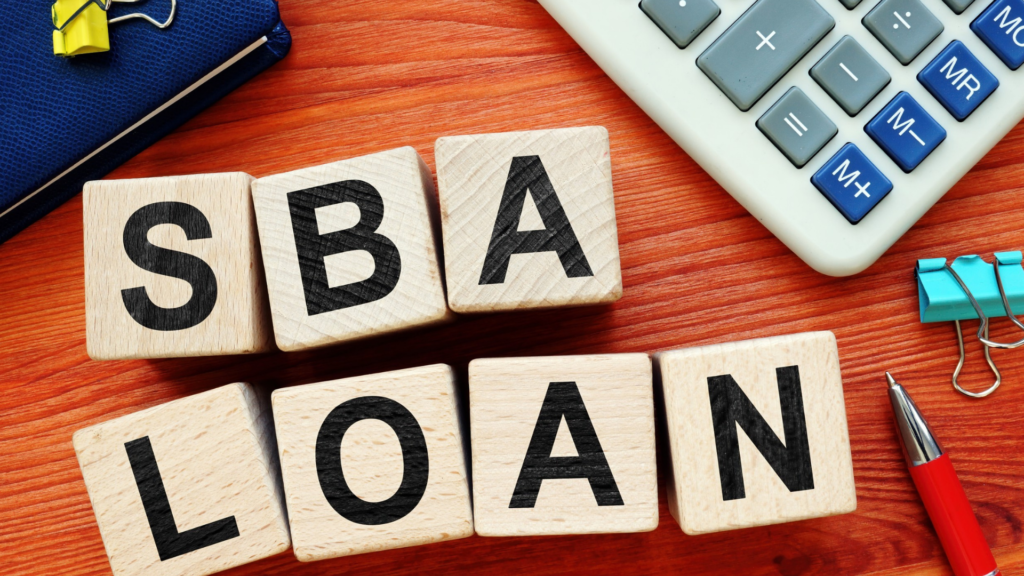Hello people! What options are available for gym startup financing? Like with any business, however, it’s fun to run a gym, but you’ve got to spend quite a bit of money upfront and hope it pays off. Equipment, leasing space, insurance, staff and marketing can all increase your costs very quickly.
Nevertheless, there are so many ways to fund your gym. If you are searching for loans, give me some cash, or a lot of investors, there are a few things you should know so that you perceive exactly how to kick begin the gym with certainty.
In this article, we’ll explore the many gym startup financing options so you can decide what’s right for you contextually, based on your needs, goals, and resources.
Let’s discuss it!
Table of Contents
Personal Savings

Pros:
- Full Control: This means that no one else has to be part of your business ownership, with you using your dollars.
- No Interest or Repayments: You’re not paying interest rates, and you’re not under pressure to make repayments because you’re recycling your funds.
Cons:
- Risk to Personal Finances: The business’ workout means you choose to invest money.
- Limited Funds: This being one of all the expenses, it’s probably impossible to pay for all of them with just your funds, so you might have to find more cash sources.
You have some liquid personal funds. This is a great option you’ve been saving for, and you are saving while. However, you have to also take into account that you can lose your savings if the business fails.
SBA loans

Pros:
- Low-Interest Rates: Out of several other loans available in the market, this loan has the most preferential interest rates with them being comparatively lesser than the traditional banking market rates.
- Long Repayment Terms: These loans do usually have long repayment terms so as to accommodate the monthly installments easily.
- Reliable Source of Funding: SBA loans have proven to be a trusted and time-tested option for small business owners.
Cons:
- Lengthy Application Process: SBA loans have a lot of paperwork and could take a few weeks on the high end or a few months.
- Strict Eligibility Requirements: You need good credit and a well-written business plan to qualify for an SBA loan.
- Personal Guarantee: The sweet spot, however, with most SBA loans is they do require a personal guarantee, so if the business blows up, you may still owe repaying the loan.
Obviously, for someone who has a great credit history and who absolutely needs large capital to get such a thing started, then an SBA loan is simply perfect.
Because it costs less upfront and over a longer period, SBA loans are actually more affordable in the long term if you’re willing to pay a little less upfront.
Traditional Bank Loans
Pros:
- Large Loan Amounts: There is a great source of funding, so you don’t have to put in a lot of your initial investment. Many traditional banks will provide you with that source of funding.
- Long-Term Financing: Depending on the size of your loan and if you select the appropriate bank (or loan), you can get long-term financing and then afford to spread out those monthly payments.
Cons:
- Strict Requirements: Bank loans often require a good credit score, a solid business plan, and sometimes a large down payment.
- Shorter Repayment Terms: Borrowers with SBA loans pay higher monthly payments than with traditional loans because repayment terms are shorter.
Equipment Financing
Pros:
- Easier Approval Process: Indeed, financing equipment isn’t usually as difficult to get as conventional loans because the equipment is being used as collateral.
- No Need for a Large Down Payment: The best aspect of this is that you can normally fund 100% of your gym equipment, so you don’t need to shell out a large amount upfront.
- Improved Cash Flow: This implies that you can purchase equipment in sections (more than one year or even years), which ensures that your cash flow continues to be additional at the initial stages of the business.
Cons:
- High Interest Rates: Equipment financing usually has higher interest rates than other loans, and the money can add up.
- Limited to Equipment: You can put all of this into just one loan, and if you don’t need the loan today for advertising or the lease of space, you can also help yourself around and get financing for your space or advertising.
If you take a big hit buying gym equipment, equipment financing is a good option. If you can’t afford to put up the machinery you can’t afford, you can afford to put that up front!
Angel Investors
Pros:
- Access to Expertise and Mentorship: Angel investors can often bring another friend from the industry who has experience and know-how, as well as contacts, to assist with your gym’s growth.
- Non-Repayment Requirement: Unlike loans, angel investors don’t owe you money. They don’t get equity in the business, so they don’t make money until your company makes money.
Cons:
- Equity Dilution: If you ran a gym and were appealing to angel investors in exchange for funding, then they would expect a percentage of ownership. So that’s going to mean you’re going to have to let some control go in the business.
- High Expectations: Investors also expect their investments to pay off within a reasonable period, and business decisions may become their concern.
- Good option for getting funding expertise and mentorship (in addition) if you’re willing to give up some ownership. Traditional lenders can hold you to the standard and won’t lend until your company has grown.
Venture Capital
Pros:
- Large Amounts of Funding: Venture capital firms can provide you with a large amount of capital quickly so that you can scale your gym quickly.
- Expert Guidance: Angel investors and venture capitalists like them like to help you expand your gym, as they bring with them expertise, networks, and business insight.
- Rapid Growth Potential: Although venture capital helps you grow rapidly through large funding rounds, it’s not really that it is ($$).
Cons:
- Significant Equity Stake: With angel investors, you have lots of control, and once you’re chosen by venture capital, you have little of both and lose most control of your company.
- Pressure to Scale Fast: You’re going to be growing fast, and that’s not great for your gym but great for venture capitalists.
However, your gym’s growth plans are going to become capital-intensive. In that case, having grown enough for the capital injections required to drive further growth, venture capital is almost always a better source of capital than all the other sources.
Next, they will demand a large share of ownership and a large degree of business control.
Crowdfunding
Pros:
- Rapid Entrepreneurs Avoiding Dilution: You can attract money on a platform like Kickstarter or Indiegogo, but it’s either ‘you always succeed, or you fail’ and if you fail to meet your objective, you won nothing.
- Crowdfunding as a Marketing Tool: Crowdfunding campaigns are also an option to consider if you are looking for a community to support your efforts to launch new products or services. Communities of your supporters will rally behind your campaigns and become your customers after funding the campaigns.
- No Repayment Requirement (If Rewards-Based): Running a rewards-based campaign will not get you money back. Instead, they may receive perks such as a reduced membership, products, or advertising.
Cons:
- Time-Consuming: In addition to all the other marketing and recurring updates (and the welcoming of fans of the product/service), a successful crowdfunding campaign does take its fair fill of setting up and running.
- Uncertain Success: Crowdfunding is risky, too; you don’t know if you’ll get the gold, and you may not even get approximately what you’re looking for.
Right, if you really had to crowdfund your gym, you’d get some talk, a little bit of buzz and excitement, and hopefully, you’d be able to tap some capital, too.
If you can already make a good offer to potential backers or already have a large following, it’s a good choice.
The following video explains about Crowdfunding:
Bulldog Reporter Fitness and Wellness Startup
Pros:
- Non-Repayable: This is essentially free money that doesn’t have to be paid back, and that is a great opportunity for gym owners.”
- Support for Health and Wellness Initiatives: If you’re willing to promote health in the community, many grants created specifically to support such efforts may be willing to fund your gym, as well.
Cons:
- Highly Competitive: Sometimes, the competition for grants can get really competitive – competing against literally hundreds of others for a very limited amount of funding. The application process feels so endless, long, and drawn out that you begin to wonder if you could do this another way.
- Limited Availability: Grants for gym startups aren’t as prevalent as they could be, so you’ll have to work out which one fits your exact business model.
- Grants exist if you’re building a health, wellness, or community development gym. However, they are usually not your primary capital but your secondary form of financing.
Conclusion
The first tip is that you should be good with finances, knowing where you need to get funds from off the ground to start a gym.
Whether it’s funded by you or by a loan or loans, or by asking investors to enter in or perform crowdfunding, there will come a time, no matter how you fund it, that it will boil down to whether you’d like to pay for yourself or pay for through a loan, or get loans, or involve investors or crowdfunding.
Based on my point of view, the best financing will be a combination of capital needed, credit history, and the amount of equity you will give up.
As you start to go down the rabbit hole that is each route listed up there, comparing pros and cons, you are able to select the best route to help you begin your gym start-up. If you have decided to start your fitness business based on your passion for fitness, then all the best!
FAQ
1. How do you finance a startup gym?
However, the most common ways for a business to get the money it needs to get started are personal savings, small business loans, which still include SBA or traditional bank loans to finance equipment, angel networks venturing capital, crowdsourcing or crowdfunding, and even grants. But that’s not to say that each has its benefits and drawbacks; each also has its own.
2. If you start a gym out of your savings, what do you do then?
One of the simplest, so-called’ easy’ ways to finance your gym is through your savings. You pay nothing upfront and won’t owe money if the business fails, but you’re putting your finances at risk.
3. So, how will an SBA loan help me, and what is it?
SBA loans are really just SBA-backed loans, which have some very good terms—horridly low interest rates and ridiculously long repayment periods. They are a great option if you are a gym owner who needs tons of capital and maybe you didn’t have the best cred, or perhaps you put down a low down payment.
4. What is typical with respect to the equipment financing?
Equipment financing involves paying for gym equipment with money borrowed. The loan amount is the collateral and the equipment, and you pay it back in instalments. Okay, let’s be real. If your gym includes expensive equipment, you may, at some point, take this up.
5. What makes new gym startups worthy of being funded by angel investors?
An angel investor is someone who invests your business’ capital in exchange for equity for the company. They’re often also giving in industry experience and mentoring, which is fantastic if you are a new gym owner. To achieve that, you’ll have to draw a line in the ownership sand.
6. How is crowdfunding the gym so financially effective?
But if you have something somewhat unique and something that people aren’t willing to pay for but you think gets repurposed, why don’t you go into crowdfunding for some money? You can raise little investments from tons of people (or crowds), but it requires way too much marketing, and you might never get to your goal of being financially where you want to be.




